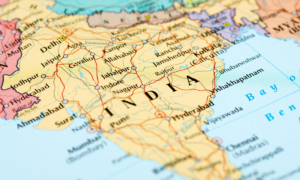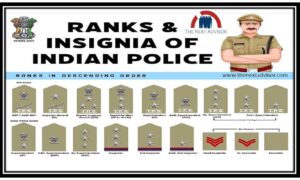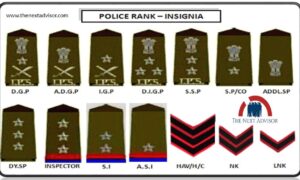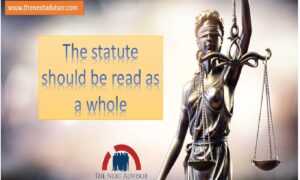INTRODUCTION of the Judicial Review -Constitutional Provisions & Case Laws related to Judicial Review
Law plays an important role in today’s society. People have given up on their rights and entered into a contract with the government in return for which the government gave them protection against the wrong. This is known as the Social Contract Theory given by Hobbes. In this phase of the Rule of Law, the law without justice can become arbitrary and can be misused. So to keep the check and balance the power of each organ of government we have further adopted Judicial Review.
Judicial review is the process by which the court declares any law which goes against the constitution as void. We have adopted this feature from the United States Constitution. But it took a lot of years to fix this feature in our constitution. Judiciary has played an important role in this regard. Judicial Review can be of Constitutional Amendments, Legislative actions, and Laws made by the legislature.
In India, there are three organs of government namely the Legislature, the Executive, and the Judiciary. The Legislature performs the function of making the laws, the Executive executes/implements the laws and the Judiciary keeps a check on both the organs specified above and makes sure the laws being made and implemented are not ultra vires to the Constitution of India.
To make these organs work within their specified limits our constitution has the feature of Separation of Power. Article 50 of the Indian Constitution talks about the separation of power. This concept is not followed in the strict sense as compared to the USA from where it has been adopted. The concept of Judicial Review has been adopted from the American Constitution.
The Judiciary has the power to set aside any law passed by the parliament if it intervenes in the Constitution of India. Any law passed by the legislature that contravenes the Constitution can be made null and void by the Judiciary. Under Article 13(2) of the Constitution of India, any law made by the parliament that abridges the right conferred to the people under Part 3 of the constitution is void-ab-initio. The power to interpret the Constitution of India to its full extent lies within the Judiciary. It is the protector of the Constitution of India.

Judicial Review -Constitutional Provisions & Case Laws
CONSTITUTIONAL PROVISIONS for Judicial Review -Constitutional Provisions & Case Laws related to judicial review
Power of Judicial Review is vested in many articles such as 13, 32,131-136, 143, 226, 145, 246, 251, 254, and 372. Article 372(1) talks about Judicial review of the pre-constitutional laws that were in force before the commencement of the Constitution of India. Article 13(2) further talks about any law made by the parliament after the commencement of the constitution shall be declared null and void by the Court. The Supreme Court and High Court are said to be the guarantors of Fundamental given by the constitution. If any person’s Fundamental right is violated he/she can approach the court under Article 32 or Article 226 of the constitution.
Articles 251 and 254 states that if there is any inconsistency between the union and state law, the law of union shall prevail and the state law shall be deemed void.
HISTORICAL BACKGROUND of Judicial Review -Constitutional Provisions & Case Laws
Let us see the historical background of Judicial Review -Constitutional Provisions & Case Laws related to judicial review. Dr. Bonham’s Case, Shankari Prasad V. Union of India, Sajjan Singh V. State of Rajasthan, I.C. Golak Nath & Ors V. State of Punjab, Kesavananda Bharti V. State of Kerala, Indira Nehru Gandhi V. Raj Narain. These are some cases related to Judicial Review –Constitutional Provisions & Case Laws, let us see them in detail. It is not possible to explain it very deeply one by one, but you can get here some important points in these cases where the judiciary used the power of judicial review of these cases.
Dr. Bonham’s Case
The word judicial review at a very early instance came before the court in Dr. Bonham’s Case. In this case, Dr. Bohnam was forbidden to practice in London by the Royal college of physicians as he was not having a license for the same. This case is also known for the violation of Principals of Natural Justice as in this case there is Pecuniary bias.
As Dr. Bonham is fined for his without a license, practicing the fine would be distributed between the king and the college itself. Afterward, the word judicial review was summarized in Marbury V. Madison, 1803. In this case, the term period of President Adam belonging to the federalist party came to an end and Jefferson the anti-federalist came to power.
On his last day, Adam appointed the members of the federal party as judges. But when Jefferson came to power he was against this. So he stopped Madison the secretary of state, from sending the appointment letter to the judges. Marbury, one of the judges, approached the Supreme Court and filed a writ of mandamus. Court refused to entertain the plea and first opposed the order of the legislature i.e Congress and thus the US Supreme court developed the doctrine of judicial review.
Shankari Prasad V. Union of India AIR 1951 SC 458
In this case, the Zamindars challenged the constitutional validity of the first amendment Act 1951 on the ground that it violates fundamental rights and Article 13(2) of the Constitution of India and contended that Article 31 is unconstitutional. The court held that any amendment made under Article 368 is not a law under Article 13 of the constitution. So, the First Amendment Act is constitutionally valid. After this case, the Fourth Amendment Act came, which added Article 31(2A) which stated that unless the ownership of property acquired is transferred to a state or state corporation, there would be no compensation.
It also stated that the adequacy of compensation which is to be fixed by law is not non-justiciable. Further 17th Amendment came in 1964 which was given retrospective effect. It added Article 31A(2)(a)(ii) and laid down that estate includes Any land for the purpose of agriculture or ancillary purpose which includes wasteland or forest land.
Sajjan Singh V. State of Rajasthan AIR 1965 SC 845
In this case, the constitutional validity of the 17th Amendment Act of 1964 was challenged. Hon’ble court by the ratio of 3:2 rejected the contention and applied the doctrine of pith and substance and held that Article 368 gives the power to amend 13(2). The judgment made in Shankari Prasad was upheld in this case.
I.C. Golak Nath & Ors V. State of Punjab AIR 1967 SC 1643
In this case, the validity of the 17th Amendment Act of 1964 was challenged again and was referred to a larger bench of 11 Judges. Court by the ratio 6:5 overruled the earlier judgment made in Shankari Prasad and Sajjan Singh and held that the word Law in Article 13 includes constitutional amendment made under Article 368. CJI Subba Rao, speaking for 5 Judges held that Article 368 provides only for the procedure and not the power to amend.
As it derives its power from Article 248 i.e Residuary Power (as not mentioned specifically) that is an ordinary law, the test of Article 13 will apply. After this landmark case 24th Amendment of 1971, came to neutralize the effect of the Golaknath case. It gave us Article 13(4), which says that any amendment made under Article 368 is not a law under Article 13. It also changed the Marginal note of Article 368 to the Power of parliament and procedure to amend the constitution.
Soon the 25th Amendment of 1971 came which changed the word “compensation” in Article 31(2) to “amount” to remove the obligation that the government is bound to give compensation. It added Article 31C to the constitution which stated that Article 14,19,31 won’t apply to a law enacted to effectuate policy underlying Article 39(b) and (c) [DPSP].
Kesavananda Bharti V. State of Kerala AlIR 1973 SC 1461
In this case, the 24th and 25th Amendment Act of 1971 was challenged. A Judge Bench of 13 Judges was constituted. With the ration of 7:6 held that: Power to amend the constitution is to be found in Article 368. It is hard to believe that it lies in residuary power.
• There is a difference between ordinary law and constitutional amendment.
• Parliament can’t destroy or amend the basic structure of the constitution.
• CJI Sikri gave the list of the Basic structure though not exhaustive; – The supremacy of the constitution. – Republic and democratic form of government. – Secular character of the Indian Constitution. – Separation of Power. – Federal character.
• Court also held that “compensation” can’t be replaced with “amount”.
Indira Nehru Gandhi V. Raj Narain AIR 1975 SC 865
In this case, the 39th Amendment Clause 4 was challenged as it puts a bar to challenging the election of Speaker and Prime Minister. It was struck down in this case and the court declared it unconstitutional. Minerva Mills V. Union of India AIR 1980 SC 1789 In this case, further Judicial Review was added to the list of Basic Structure of the constitution along with the balance between Fundamental Rights and Directive Principles.
I.R. Coelho V. State of Tamil Nadu AIR 2008 SC 861 In this case the court held that any act inserted in Schedule 9 can be judicially scrutinized but only those enactments which are inserted after 24th April 1973.
This is all about Now you will hardly have any questions about the Judicial Review -Constitutional Provisions & Case laws.
























